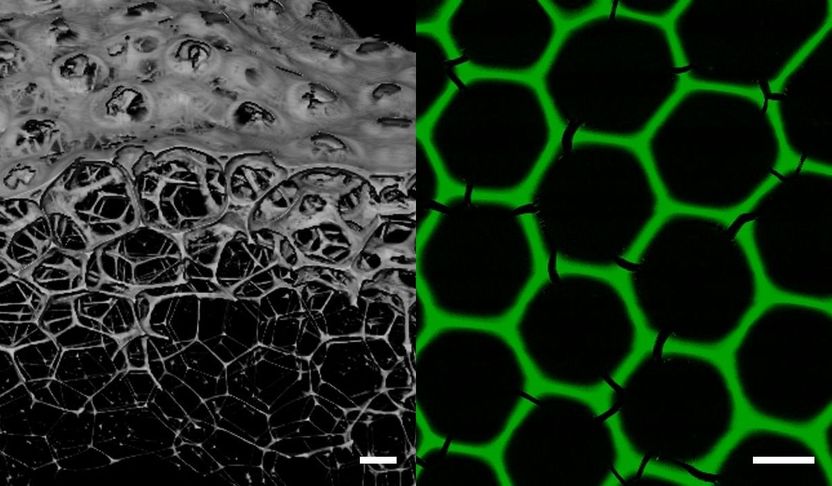New metamaterials that bend light backwards bring invisibility cloaks 1 step closer
Scientists at the University of California, Berkeley, have for the first time engineered 3-D materials that can reverse the natural direction of visible and near-infrared light, a development that could help form the basis for higher resolution optical imaging, nanocircuits for high-powered computers, and, to the delight of science-fiction and fantasy buffs, cloaking devices that could render objects invisible to the human eye. Two breakthroughs in the development of metamaterials - composite materials with extraordinary capabilities to bend electromagnetic waves - are reported separately this week in the Aug. 13 advanced online issue of Nature, and in the Aug. 15 issue of Science.
Applications for a metamaterial entail altering how light normally behaves. In the case of invisibility cloaks or shields, the material would need to curve light waves completely around the object like a river flowing around a rock. For optical microscopes to discern individual, living viruses or DNA molecules, the resolution of the microscope must be smaller than the wavelength of light.
The common thread in such metamaterials is negative refraction. In contrast, all materials found in nature have a positive refractive index, a measure of how much electromagnetic waves are bent when moving from one medium to another.
Other research teams have previously developed metamaterials that function at optical frequencies, but those 2-D materials have been limited to a single monolayer of artificial atoms whose light-bending properties cannot be defined. Thicker, 3-D metamaterials with negative refraction have only been reported at longer microwave wavelengths.
"What we have done is take two very different approaches to the challenge of creating bulk metamaterials that can exhibit negative refraction in optical frequencies," said Xiang Zhang, professor at UC Berkeley's Nanoscale Science and Engineering Center, funded by the National Science Foundation (NSF), and head of the research teams that developed the two new metamaterials. "Both bring us a major step closer to the development of practical applications for metamaterials."
For a metamaterial to achieve negative refraction, its structural array must be smaller than the electromagnetic wavelength being used. Not surprisingly, there has been more success in manipulating wavelengths in the longer microwave band, which can measure 1 millimeter up to 30 centimeters long.
In the Nature paper, the UC Berkeley researchers stacked together alternating layers of silver and non-conducting magnesium fluoride, and cut nanoscale-sized fishnet patterns into the layers to create a bulk optical metamaterial. At wavelengths as short as 1500 nanometers, the near-infrared light range, researchers measured a negative index of refraction.
Jason Valentine, UC Berkeley graduate student and co-lead author of the Nature paper, explained that each pair of conducting and non-conducting layers forms a circuit, or current loop. Stacking the alternating layers together creates a series of circuits that respond together in opposition to that of the magnetic field from the incoming light.
Most read news
Organizations
Other news from the department science

Get the chemical industry in your inbox
By submitting this form you agree that LUMITOS AG will send you the newsletter(s) selected above by email. Your data will not be passed on to third parties. Your data will be stored and processed in accordance with our data protection regulations. LUMITOS may contact you by email for the purpose of advertising or market and opinion surveys. You can revoke your consent at any time without giving reasons to LUMITOS AG, Ernst-Augustin-Str. 2, 12489 Berlin, Germany or by e-mail at revoke@lumitos.com with effect for the future. In addition, each email contains a link to unsubscribe from the corresponding newsletter.




























































